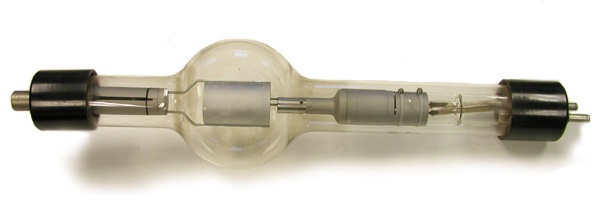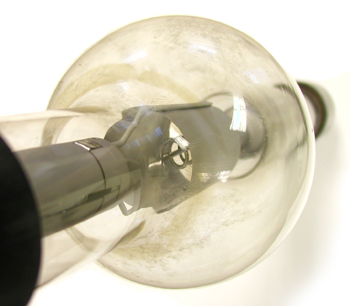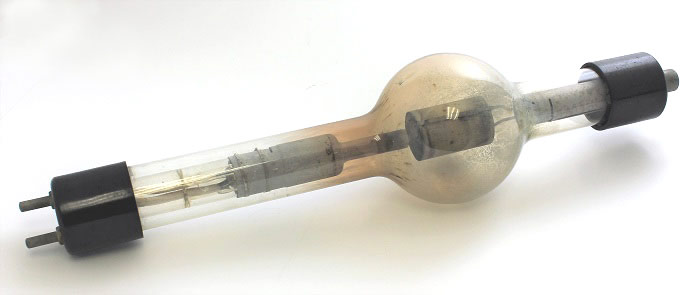General Electric KR-3 Kenotron Tube (ca. 1930s-1950s)

Quoting Grigg's Trail of the Invisible Light: "In 1914, at GE's Research Lab in Schenectady, [Saul] Dushman developed the hot cathode valve tube. This [referring to a photo of the KR-3] is the first commercial model (KR-3). Its long life stemmed, in part, from the fact that the anode surrounded the cathode, thus preventing erratic voltage drops due to charges developed on the inner surface of the glass."

The label on the stem identifies it as a "Coolidge" tube, but it came to be known as a "kenotron."
The photo to the right show the spiral cathode inside the tubular, open-ended anode.
The KR-3 was air cooled (the KR-4 was oil cooled).
For what it is worth, the KR stands for Kenotron rectifier. Originally, GE intended "kenotron"' to refer to all Coolidge-type tubes, however the name quickly became limited to valve tubes like the KR-3. "Kenotron" is derived from the Greek "kenos" (meaning empty or void) and "tron" (meaning device or instrument).
The following image shows what can happen when a KR-3 suffers catastrophic damage.

Size: 20" long, 5" in diameter (bulb)
Price: $248 in 1953-1954 GE catalog
Donated by the University of Kansas courtesy of Michael Lemon. The second (damaged) tube was kindly donated by children of Frederick G Ouellette, Sr., with special thanks to Jeanne and Tom.
References
- E.R.N. Grigg. Trail of the Invisible Light. Charles C Thomas. 1965.
- General Electric X-ray Corporation. Coolidge X-ray Tubes - Kenotrons. Bulletin No. 293. 1934.
- General Electric Catalog. X-ray Supplies and Accessories. 1953-1954.
